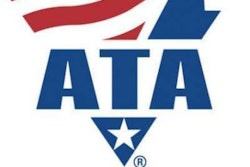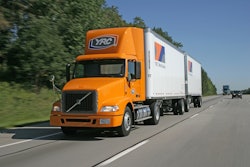In 1919, an escapee from a military stockade in Virginia prompted the U.S. Army to enlist the help of the U.S. Department of Justice’s Division of Investigation, the precursor to the Federal Bureau of Investigation. The agency put out an “Identification Order” memo to its agents and local law enforcement in the area, creating essentially the first federally issued “wanted” poster and a staple of crime fighting in the early 20th century.
Bonnie and Clyde, George “Baby Face” Nelson and John Dillinger warranted some of the more famous IOs since. In 1950, the FBI began aggregating these criminals into a “Ten Most Wanted” list that it still uses today.
Not to be left out of all the fun, the National Transportation Safety Board in 1990 started publishing its own annual “Most Wanted List of Transportation Safety Improvements.” While you won’t see any fugitives here, NTSB uses it to outline the areas of greatest concern to all modes of transportation and make safety recommendations to divisions of the U.S. Department of Transportation and other agencies.
For years, mainstays on NTSB’s list have been trucking-specific items such as fatigue, vehicle collision avoidance technologies, electronic onboard recorder requirements, medical qualifications and distracted driving. The Federal Motor Carrier Safety Administration already has made many of these recommendations into regulations for the trucking industry.
But on this year’s list, I was amazed there was nothing directly related to trucking. That’s a breath of fresh air for an industry that has been stymied in recent years by an unprecedented run of regulatory burdens. Four new issue areas make this year’s list: helicopter safety, passenger vessel safety, rail mass transit safety and occupant crash protection.
Citing that 90 percent of the 35,000 annual transportation-related fatalities occur on our nation’s highways, NTSB Chairman Deborah Hersman said, “If it was all about the numbers, the only issues on our list would be about highway safety. But we have to identify ways to improve safety in all modes of transportation.”
In the case of two items on NTSB’s list – eliminating distraction in transportation and eliminating substance-impaired driving – laws and regulations for the trucking industry already exist.
According to the fact sheets on these particular issues, NTSB’s efforts are broadened to all modes of commercial and public transportation. Considering that 80 percent or more of all truck-related fatalities are the fault of a passenger car rather than a truck, any headway made in these two areas only can lower the incident rate of truck-involved accidents.
Not surprisingly, the American Trucking Associations was quick to congratulate NTSB on its 2014 list. “We appreciate NTSB’s persistence in addressing critical safety issues, especially those that affect the trucking industry’s workplace, our highways,” said Bill Graves, ATA president and chief executive officer. “ATA has long been a proponent of reducing the risks of distracted driving, eliminating drunk or drugged driving by all motorists … it makes good sense for NTSB to shine a light on these important issues.”
Ninety-four percent of fugitives listed on the FBI’s “Ten Most Wanted” list have been captured since it started its list 64 years ago. It will be interesting to see if NTSB can experience a similar success rate in its 2014 efforts. In a year where the trucking industry isn’t in its crosshairs, I sincerely hope it does.











